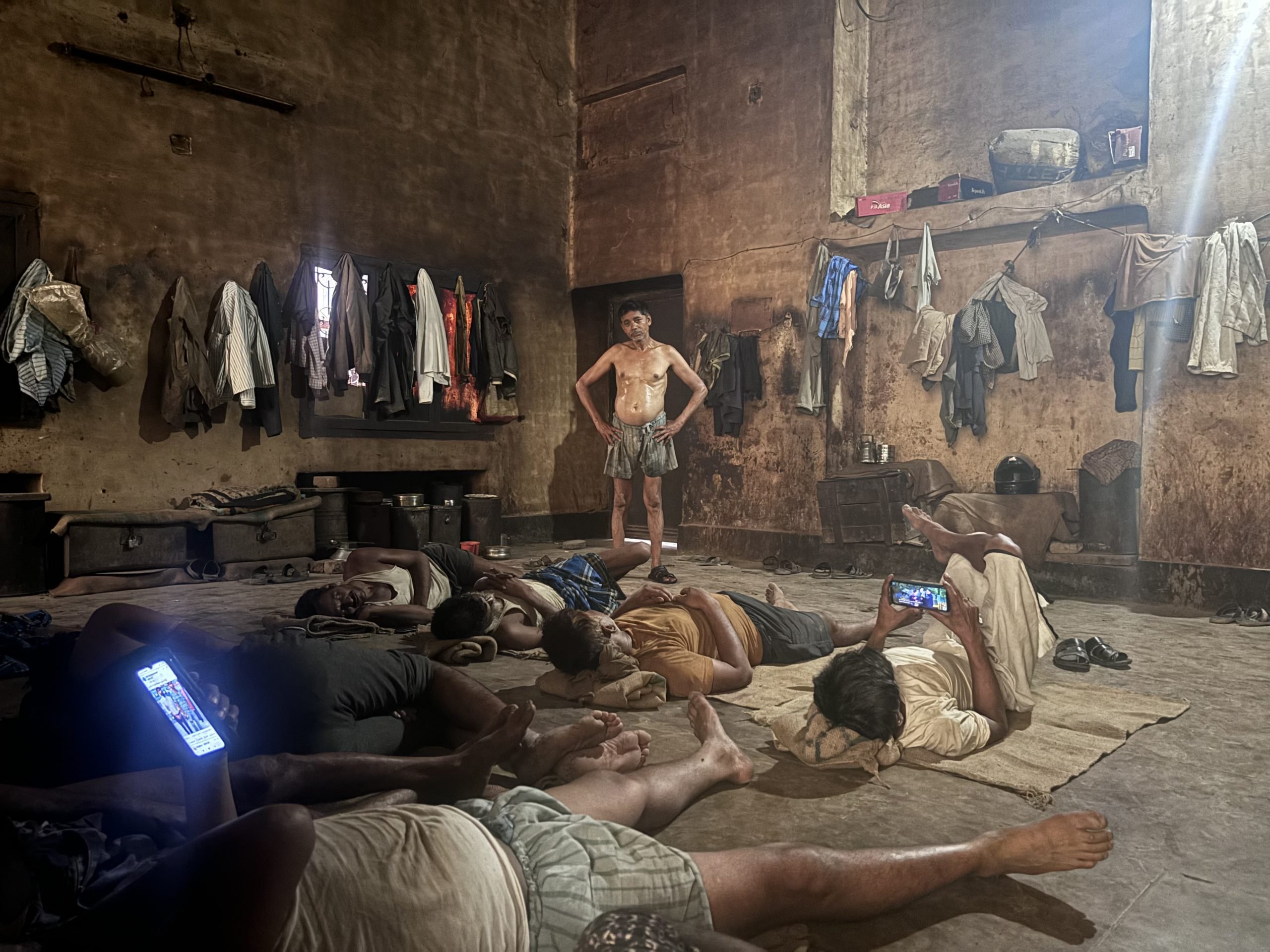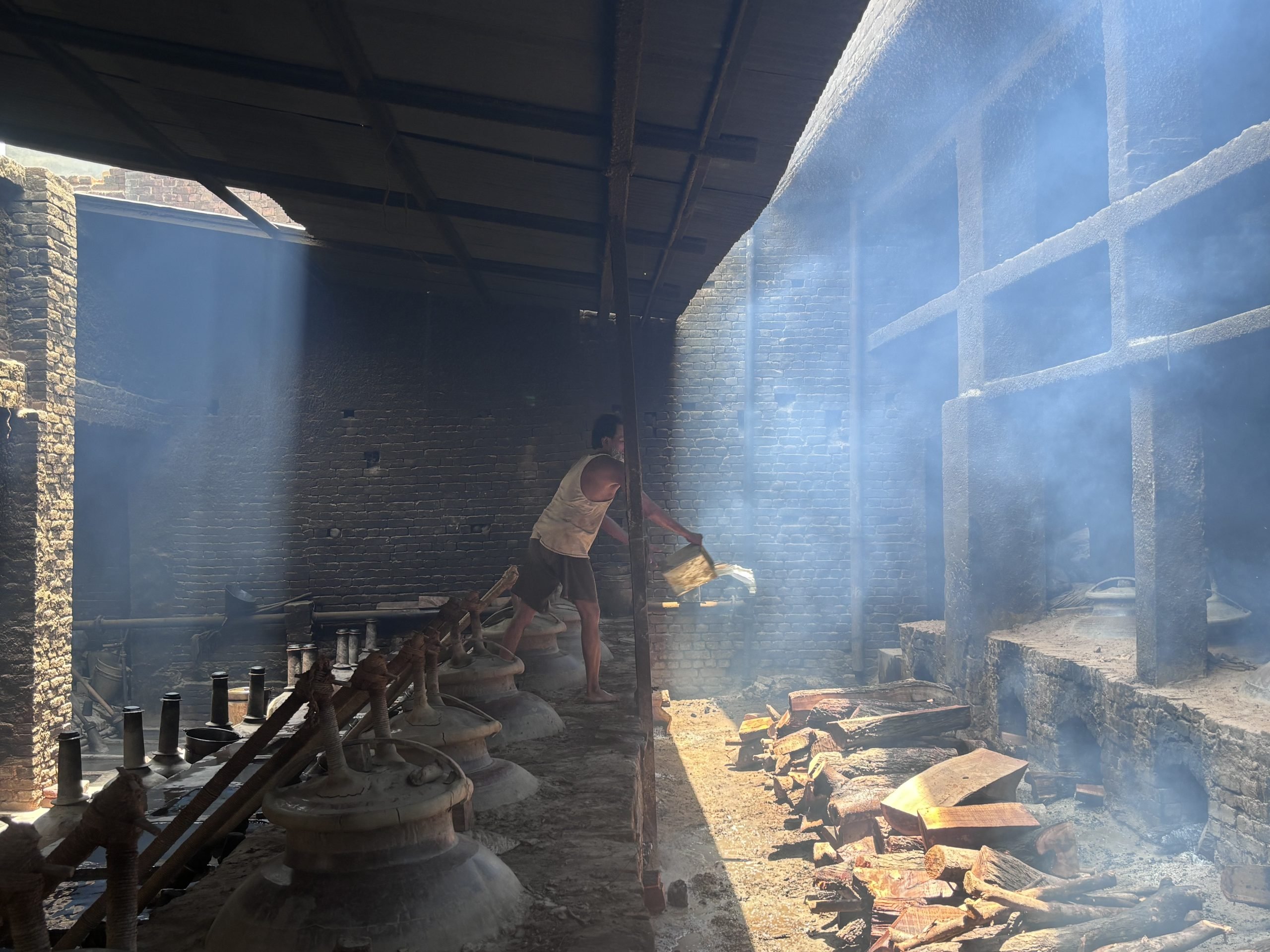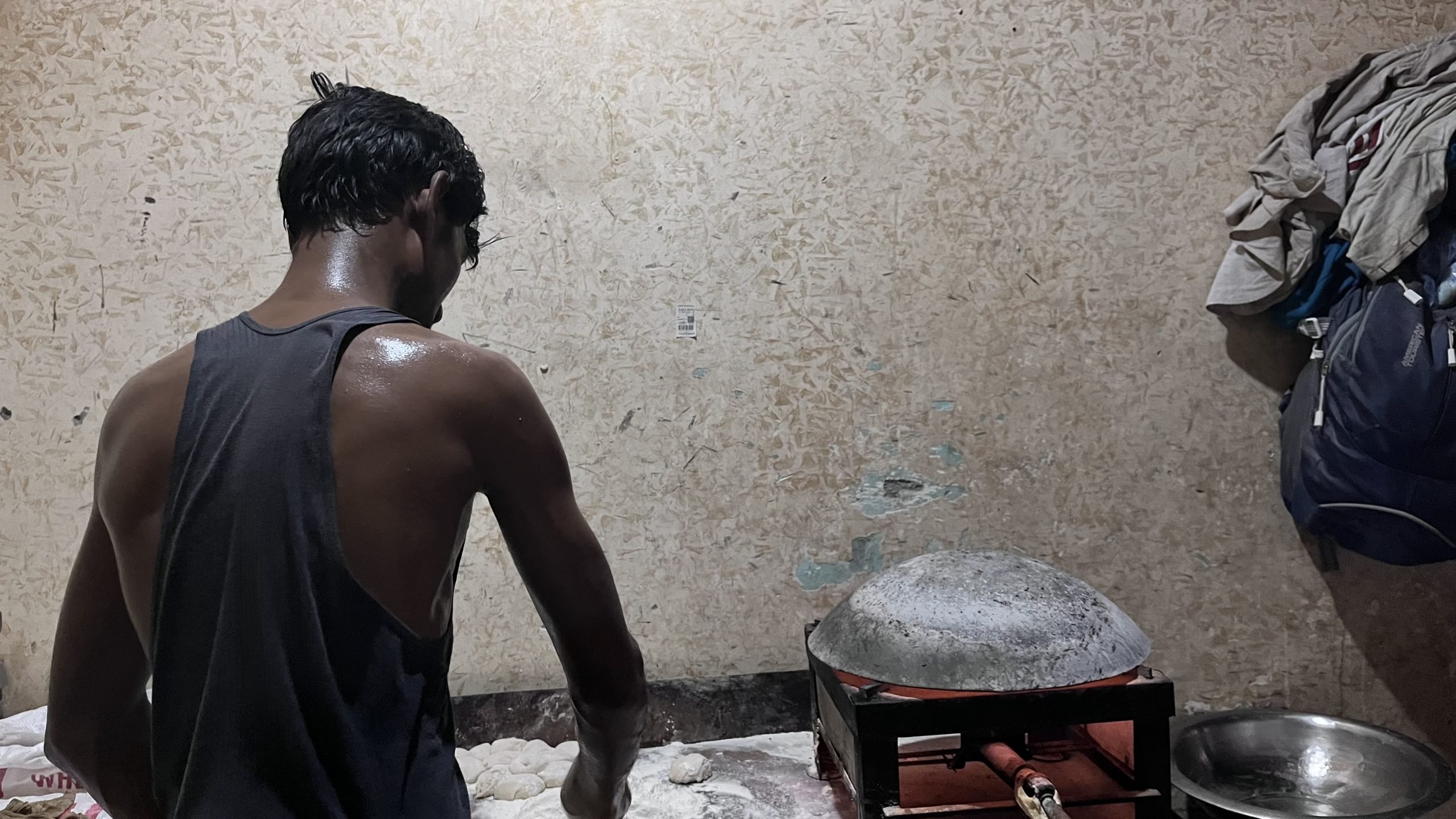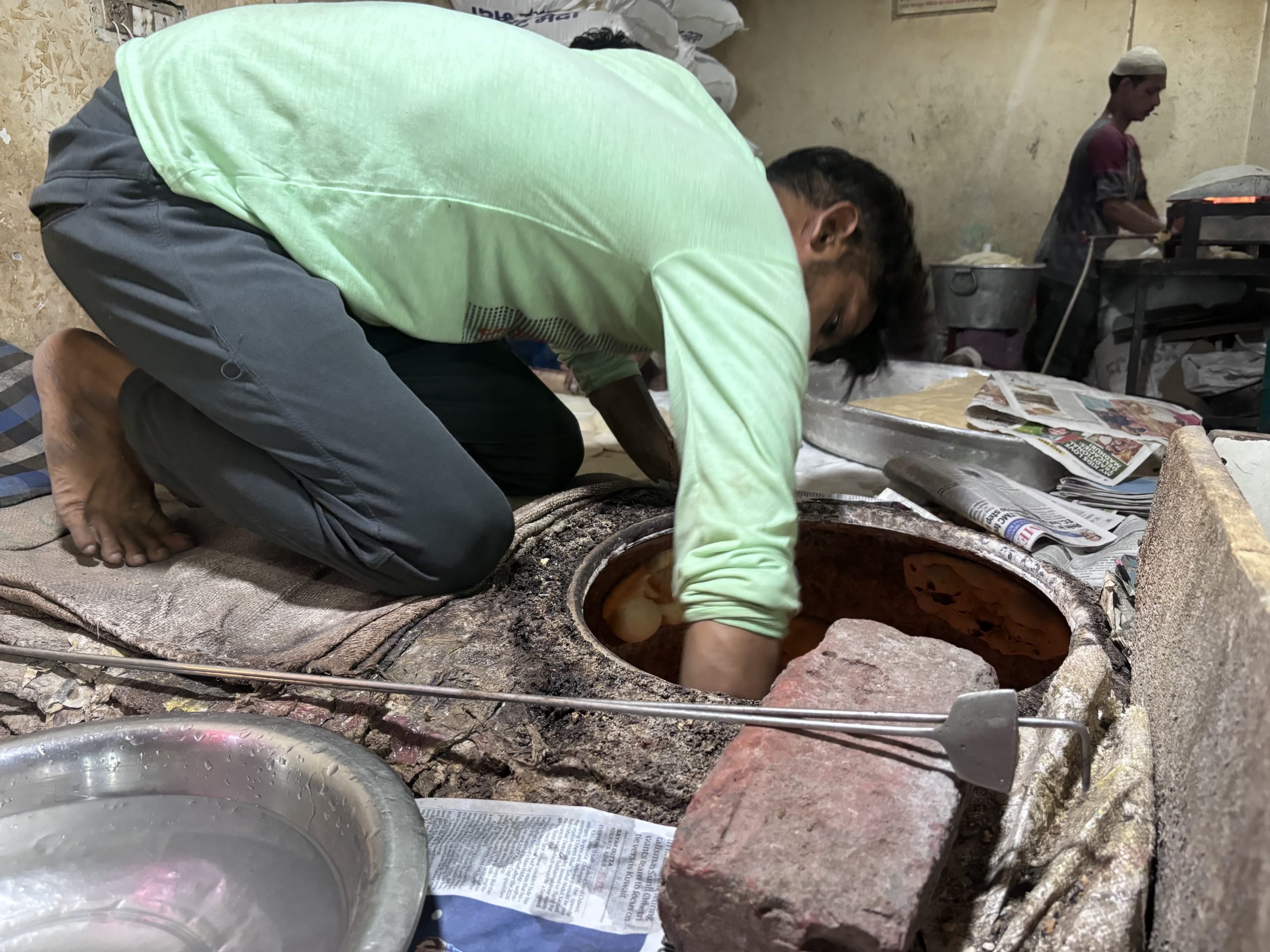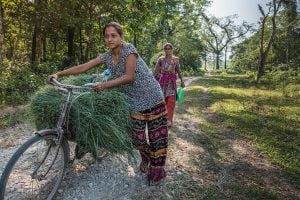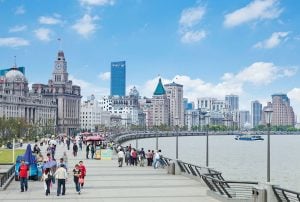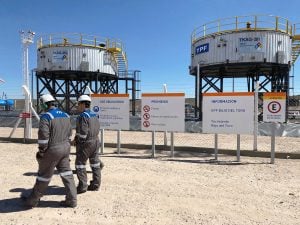In June, as the India Meteorological Department (IMD) warned of ‘severe heatwave conditions’ sixty-year-old Mohd Zaffer fed fuel to the fire. Zaffer, a master craftsman with three decades of experience making perfumes, was heating large metal pots called deghs, used in the production of Shamama Attar, a rare, traditional scent made in the city of Kannauj, the perfume capital of India. Despite temperatures reaching 45˚C outside, a sweat-drenched Zaffer maintained his focus.
The scent-making process involves a simple distillation method. Ingredients are added to a metal pot to simmer on a small furnace, from which steam travels through a wooden pipe to another pot or receiver, which is kept in water to condense the steam. Artisans must simultaneously control the heat and adjust the hot receiver, working perilously close to the furnace and exposing themselves to dangerous levels of heat.
Summers are especially difficult to work here. The entire area is filled with smoke and black soot.Mohd Zaffer, master craftsman
“Our job requires us to keep an eye on these deghs to keep the heat in control. If it needs more heat, we add wood to the furnace. Once the steam is collected in the receiver pot or bhapka, the water around it gets extremely hot. And that’s the time we have to adjust it (receiver) with our bare hands,” explains Zaffer, detailing the traditional degh-bhapka method.
Zaffer works dangerously close to the furnace for over 10 hours without any protective gear, wearing only loose shorts and a vest to let the sweat dry quickly. Even when changing the hot receiver, his only protection is a damp cotton cloth. The heat from the furnace is not the only danger. Zaffer works in a closed estate with a large tin-covered compound in the middle housing 20 such deghs and furnaces.
“Summers are especially difficult to work here. The entire area is filled with smoke and black soot. Others can’t even stand here for even 10 minutes,” he says. “We have gotten used to this heat and smoke now. But yes, winters are more bearable here.”
According to the latest global report on health and safety in a changing climate by the International Labour Organisation (ILO), “Workers across different sectors are exposed to these hazards but some workers, such as agricultural workers and other outdoor workers carrying out heavy labour in hot climates, may be particularly at risk.” There is no consolidated data on heat deaths due to labour conditions in India, even if newspapers sometimes report them.
The perfumery where Zaffer works employs about 15 workers. Their work exposes them to various hazards, like high ambient temperatures and radiant heat from furnaces. These workers operate in poorly ventilated home-based industries and small factories, classified under the micro, small and medium enterprises (MSME) category.
In the state of Uttar Pradesh, where Kannauj is located, the MSME sector employs about 11 million workers, while across India, the sector employs over 123 million people, accounting for 20% of the entire workforce. While not all MSMEs engage in extreme heat-related activities, most MSME employees are exposed to heat hazards due to the informal nature of their work.
Avikal Somvanshi, head of the Urban Lab programme at the Centre for Science and Environment (CSE), says: “Anyone working in medium and small-scale industries, factories, which are not insulated, or do not have any kind of air conditioning or even fans to cool people down are highly vulnerable to heat.” He notes that these buildings are cramped withoutventilation, with tin roofs that fail to block out the heat, especially during extreme temperatures such as those experienced in May and June.
In 2024, India experienced one of its longest-ever heatwaves. Uttar Pradesh saw 20 heatwave days between March 1 to June 9. Media reports indicate that between March 1 and June 18, approximately 110 people died from heat stroke, with over 40,000 suspected cases reported. Although data related to work-related illness or deaths due to heat is unavailable, reports suggest fatalities in North Indian states like Delhi and Uttar Pradesh.
Indian labour laws on heat exposure in the workplace
Occupational safety and health used to fall under the Factories Act, 1948, which required factories to ensure “adequate ventilation by the circulation of fresh air” and maintain “such a temperature as will secure to workers therein reasonable conditions of comfort and prevent injury to health”. In 2020, India consolidated 13 central laws on workers’ safety into the Occupational Safety, Health and Working Conditions Code, 2020.
The new code mentions managing temperatures only in the context of dock workers. Moreover, as noted by the think tank PRS Legislative Research, “The 2020 bill empowers the state government to exempt any new factory from the provisions of the Code in order to create more economic activity and employment.” This exemption has been retained in the act.
Other government institutions, such as the National Disaster Management Authority (NDMA), also ignore the impact of rising heat on industry, focussing only on individuals, with only advisory guidelines for heatwaves. The Ministry of Labour and Employment, responsible for overseeing worker safety, is restricted in its actions.
Navneet Shrivastav, labour enforcement officer at the Kannauj labour department, says, “The district authority has released directions for putting work on hold during the day time. We are seeing a decline in working hours especially during peak heat time (12 PM-3 PM).” He adds, “We cannot ask small factories to stop work or inspect the workplace directly without any complaint by workers to the commission.”
The ‘general’ nature of heat action plans and advisories
In 2019, the NDMA published its national guidelines on heatwaves to protect the public from extreme heat. These guidelines aim to help public officials develop their own heatwave action plans across India’s cities and towns. During heatwaves, the labour department, state disaster management authorities (SDMAs), the India Meteorological Department and other state authorities release advisories and Heat Action Plan (HAPs) for the general public and workers.
Aravind Unni, a policy researcher on heat and informal workers with the Tata Institute of Social Sciences (TISS), highlights that these HAPs and advisories are “general” in nature. “Our HAPs and heat warnings never go into details of workers, population groups, or marginalised groups,” he says.
Unni suggests that district administration or municipal authorities could enhance HAPs by providing specific advisories for various demographics, such as perfume makers, brick kiln workers and textile workers, who experience heat in different workplace contexts. This tailored approach could improve the effectiveness of heat-related advisories.
The lethality of humid heat
Another missing element in the HAPs and guidelines is the consideration of humid heat. While humans can tolerate 54˚C of dry heat, studies show that, in humid conditions, “35°C marks the heat stress tolerance limit”. Since MSMEs are poorly ventilated and often cramped, humidity becomes more difficult to tolerate for workers, especially during the monsoon season.
In early July, Dialogue Earth visited a few small bakeries in Delhi. Mohd Rizwan, who works alongside a furnace fuelled by liquified petroleum gas used for baking bread, says, “It is very bad here during summers, especially when the monsoon arrives. One starts feeling very hot and dizzy during summer. It often leads to vomiting.”
The 24-year-old bakes bread near the furnace for over eight hours. “We can’t have [overhead] fans working here, as it just blows hot air,” he adds. The only fan that is present is a small table fan near the bhatti that blows hot air away.
“Heat indexes are not well-established in India,” Dileep Mavalanka, a public health expert and former director of the Indian Institute of Public Health Gandhinagar, tells Dialogue Earth. “Other countries [such as the US] have measures to combine temperature and humidity. India doesn’t have separate advisories for humid heat or wet-bulb temperature.”
“Every layer of marginality… brings a new problem,” says Unni. Unless the details are dealt with, he says, the HAPs and heat-related advisories will change nothing for those most at risk of the rising heat in India.
